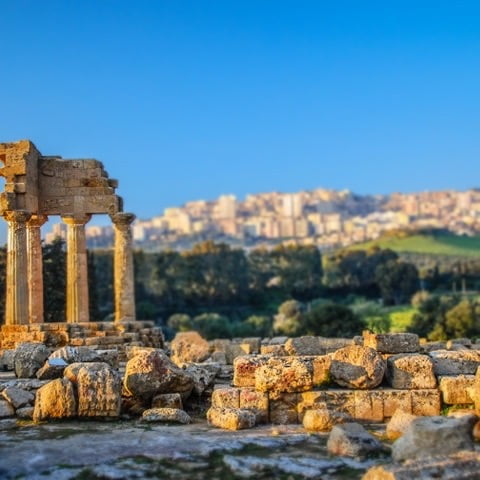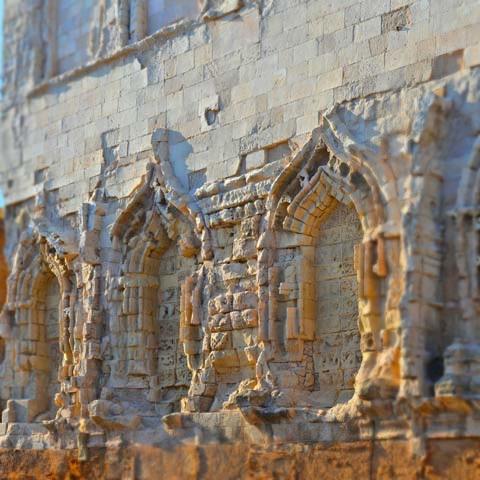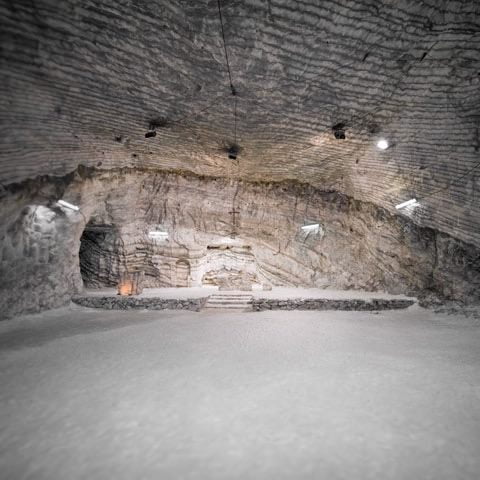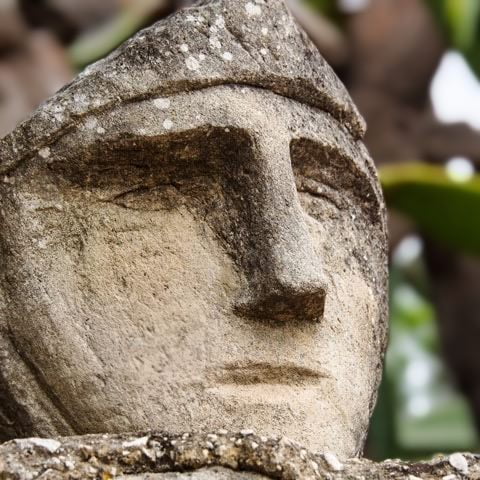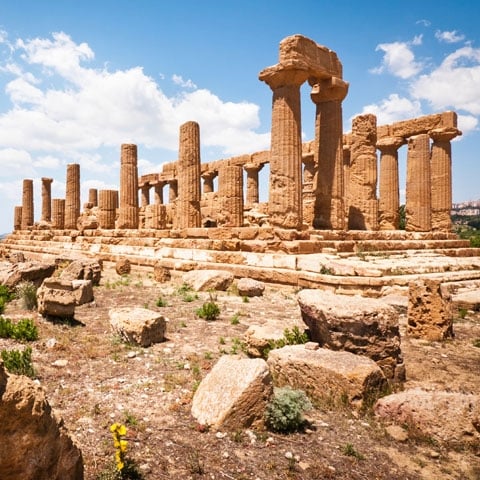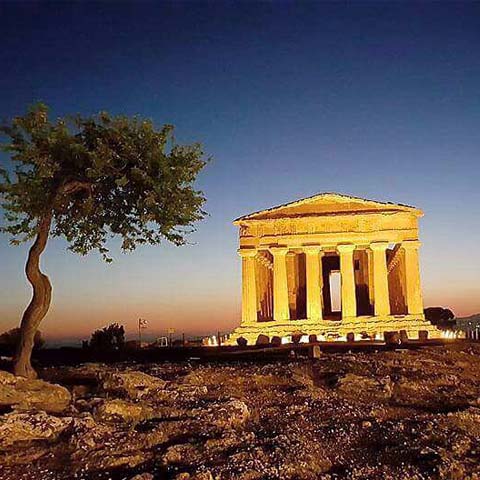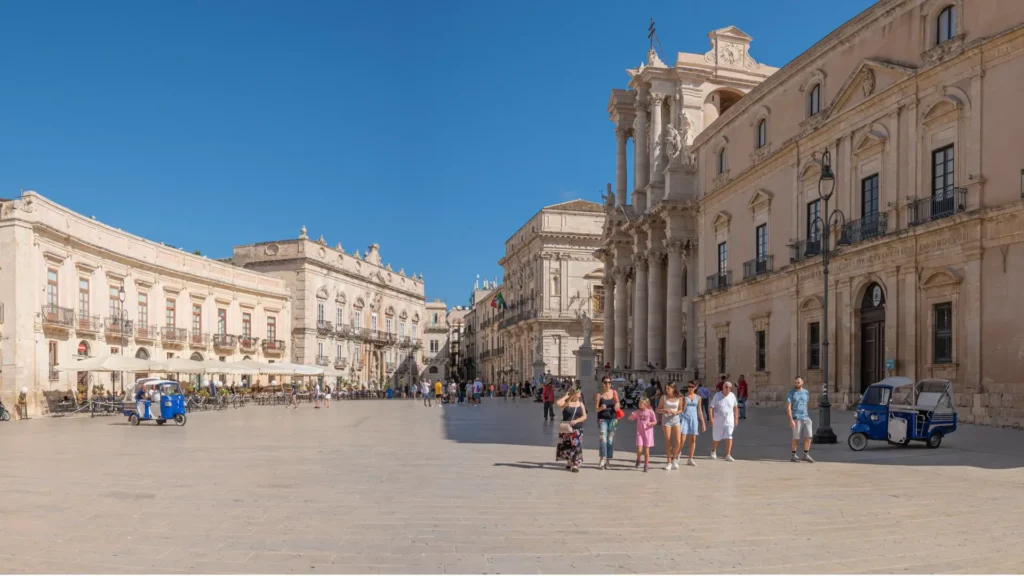Perched on a hilltop on Sicily’s southwest shore, Agrigento is known all over the world for its ancient ruins located in the old city of Akragas, the Valley of the Temples, and its vast archeological sites.
Well-preserved Greek temples give tourists the feeling of walking on Greek rather than Italian soil. The modern city proudly preserves its heritage and showcases countless artifacts, including a fascinating telamon.
Besides vestiges, Agrigento is also known for its natural beauty. Stepped white cliffs overlooking the crystalline sea have a surreal beauty that has attracted civilization after civilization along the centuries.
PREHISTORY OF AGRIGENTO
The history of Agrigento starts with Akragas, an ancient city founded by the Greeks on the southwestern coast of Sicily around 580 BC.
At the time, the city was called a polis, and its ancient history is linked to the development of Gela, another settlement founded in 581 BC by Greek colonists who established themselves on the Italian island.
Akragas, however, was founded by settlers from the islands of Crete and Rhodes.
The foundation of the polis on the isolated southwestern coast that was rarely frequented by the Greeks was triggered perhaps by the fertile land that allowed for a rich agricultural production. The extensive plains of the territory also favored the breeding of horses, so the settlers could strengthen their armies with cavalry, a military specialty typical of Greek aristocracies.
At the same time, the proximity to the sea ensured the continuity of trade with the motherland, as well as a balancing of the numerical disproportion of the settlers with the indigenous people.
The Greek period only lasted for about three centuries, but during this time, Agrigento received its wonderful Valley of the Temples. During this phase, the maximum development was reached between 488 and 406 BC, when the territory expanded up to the northern coast of Sicily.
Having become an important military power, Akragas managed to defeat Carthage in the war to control the Sicilian Channel. However, the temples were only built under the philosopher Empedocles, who brought cultural enlightenment and economic prosperity to the area.
The period of great splendor ended in 406 BC when the Carthaginians invaded the city and destroyed it almost completely.
Akragas fell under the influence of Syracuse in 339 BC, when it was rebuilt and repopulated.
Regaining some of its power under Finzia, the tyrant of Akragas, the city attacked Gela, destroying it and deporting the population to Licata, a settlement built in pure Greek style with Greek walls, agoras, and temples.
In an attempt to punish such behavior, Syracuse engaged in battles and defeated Akragas two years later. With the Second Punic war, the Greek settlement fell under Roman control. Rome began an intense process of Romanization, giving the city a Latinized name, Agrigentum.
The city flourished during the Roman-Republican age when many of the original Hellenic houses were rebuilt or embellished with Roman-style frescoes and paintings, a sign of economic prosperity.
However, a general revolt of the surrounding Greek settlements led to conflicts. During the Imperial age, the entire island entered a grimmer period marked by depopulation of the territories and the emergence of profound imbalances between the city and the countryside. Nevertheless, the buildings in Agrigento continued to be restored with splendid mosaic floors until the middle of the fourth century AD, a sign of the persistence of the class possessors.
HISTORY OF AGRIGENTO
With the end of the Western Roman Empire in 476 AD, Agrigentum was overwhelmed by the devastating fury of the Barbarians. Their attacks only ceased with the arrival of the Byzantines in the sixth century. During this century, the spread of Christianity in the region began.
Due to the bloody attacks, the population of the Hellenistic-Roman quarter was now greatly reduced, so when the Saracens began their raids, the people of Agrigento were forced to migrate towards the Grigenti Hill.
Nevertheless, in 828, the city was conquered by the Arabs. Despite a rough beginning, the two cultures gradually reached an agreement that allowed the community to grow and prosper.
The city began to develop its agricultural activities, crafts, industries, and commerce; soon enough, Agrigento reached such a development that it started to attract people from other cities in Sicily, as well as settlers from Africa.
The eleventh century found the city occupied by the predominantly Arab population that shaped the look of the dwellings and customs. Subsistence was ensured by exports of wheat, oil, animal skins, timber, and salt.
The second process of Latinization began in 1087, with the arrival of the Normans. Supported by Ligurian, Tuscan, and Lombard families, the Normans established themselves as the ruling class of Agrigento.
However, the Normans did not interrupt the commercial activities created by the Arabs, just favored the exchanges with the Maritime Republics of Pisa, Venice, Genoa, and Amalfi rather than with Africa.
The new relations were now based on the trade of different goods, such as citrus fruits, cotton, silk, and cane.
It all changed during the successive domination of the Anjou, as Charles of Anjou implemented a provocative attitude towards the Sicilians, canceling many of the privileges the Sicilian barons were granted under the Normans.
However, this huge political mistake cost him dearly, as the revolt of the Sicilian Vespers ended with the expulsion of the French, who were now replaced by the Spaniards.
Indeed, the Spaniards gave the barons back their lost privileges and also granted all of Sicily a good margin of autonomy.
Except for two brief periods under the Savoy first and the Habsburgs second, the island – Agrigento included – remained under the Spaniards until the Unification of Italy under Garibaldi.
Under the Spaniards, Agrigento was first occupied by the Catalans, who were majorly interested in the port. In the sixteenth century, the city extended its borders to incorporate new churches and convents which were later transformed into public buildings, and during this period the first Jewish ghetto emerged, bordering the noble district of the city.
However, the entire period until Garibaldi’s liberation was not particularly favorable to the city. Agrigento was mostly left to itself. It did not receive any impressive buildings, nor was it adorned with fountains or statues. Its dirt roads would become muddy in winter and dusty in summer, while illiteracy reached the highest peaks.
In the suburbs, above all, the hygienic conditions were appalling. Majorly inhabited by peasants who migrated towards the city due to security reasons, Agrigento appeared as a rural city in the first half of the nineteenth century.
By now, the commercial activities were almost inexistent, apart from some mercantile movement and a few shops.
Most shops were concentrated in the Biberria area; however, the core of commercial activity in Agrigento was composed of the street vendors who wheeled their carts around the city.
Industrial activities were majorly focused on the production of artificial coal and sulfur. To worsen this already scarce socio-economic situation, a grasshopper infestation in 1832 destroyed all crops right before the deadly petechial fever depleted the population in 1833.
If that were not enough, the cholera epidemic spread in 1837, further decimating the already weakened population of Agrigento. In the middle of all this crisis, the arrival of Ferdinand II of Bourbon in 1847 brought some relief.
The new king ordered his administration to start a series of public works aimed at alleviating the worries of an already exhausted population. In the same year, the construction of connection roads between Agrigento and Licata started, and in the following year, the city got its promenade, public gardens, and new buildings including Villa Maria Teresa, now known as Villa Garibaldi.
The main streets were also rebuilt and paved. Throughout the century, Agrigento also received more squares, schools, and infrastructure works, including improved public lighting.
Thanks to all these improvements, the beginning of the twentieth century found the city looking at a much brighter future. Further works included the construction of elegant and well-stocked shops, while the opening of the Suez Canal also meant a true boost in the trade of sulfur. World War I did not affect the city too much, but the people lived it intensely through the dramatic letters of the soldiers recruited in the city. By the end of the war, Agrigento had paid a high tribute to the national cause.
Yet, after the war, the city began to live again, undergoing the fascination of the new political unrest that came from the continent.
Fascism established itself easily in the city and was received with grand acclaim, above all because under this regime, the urban improvement works continued with the erection of many public buildings and social housing.
World War II had more serious consequences than its predecessor, finding the city located along the axis of the advancement of the Allies, who landed in Gela on July 10, 1943. An aerial bombardment two days later concluded with enormous destruction, above all in the San Girolamo district.
The bombs severely damaged the former convent and the Church of San Francesco, the main cathedral, and the Church of Itria.
During the post-War years, and especially during the fifties and sixties, Agrigento entered a period of profound chaos due to the lack of a plan of control over the urban territory.
As such, many citizens solved their housing needs with the help of unscrupulous contractors who built everywhere, even in geologically unstable areas. It was only a matter of time until inevitable catastrophe struck with a landslide that changed the face of the city forever.
Following these events, the authorities established more extensive protection of the territory that blocked the development of new buildings in the Valley of the Temples, which remains one of the most respected archaeological areas in the world.
ARCHEOLOGY IN AGRIGENTO
Agrigento is one of the richest areas in the world from an archaeological standpoint. Open-air sites cover the entire perimeter of the city but are majorly concentrated in the Valley of the Temples.
As its name suggests, this site is renowned for its numerous Greek temples, eleven of which have survived to our days. Perhaps the most evocative is the Temple of Concordia, that preserves most of its ancient charm.
This entire area was declared a UNESCO World Heritage Site in 1997. Besides temples, the archaeological site also features numerous sanctuaries, public buildings, and necropolises. In the Hellenistic-Roman quarter of Agrigento, there are still traces of Greek and Roman buildings, while around the entire perimeter of the city, there are remains of the old city walls that can still be seen.
The most important indoor site is the Archaeological Museum of Agrigento. Most of the vestiges here include Greek artifacts excavated from the surroundings of the Valley of the Temples, but there are also a few collections of objects retrieved from other areas.
